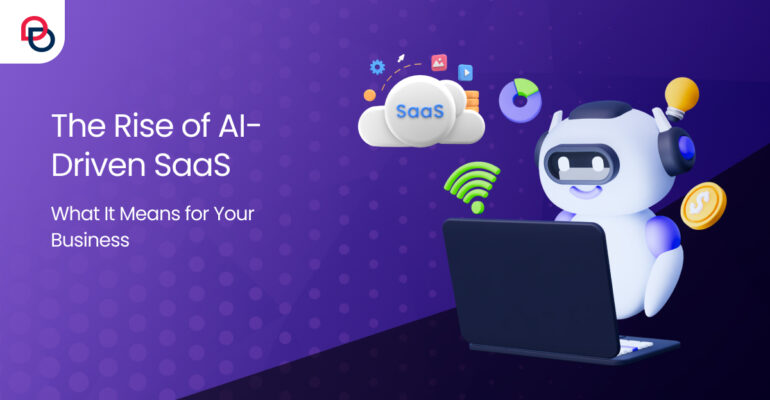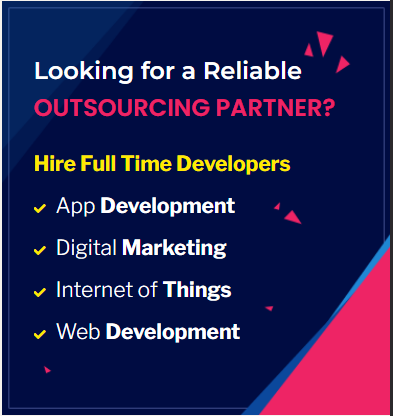The Rise of AI-Driven SaaS: What It Means for Your Business

The Rise of AI-Driven SaaS: What It Means for Your Business
SaaS used to mean convenience. It was merely software you could access anytime, anywhere, without installation. But today, it means intelligence. Modern SaaS platforms don’t just store data or automate processes.
They learn, predict, and adapt.
AI isn’t a feature anymore; it’s becoming the foundation of how SaaS works.
The result? Software that helps teams make decisions faster, personalize experiences, and uncover insights automatically.
At Brainium, we help businesses build these new-age SaaS products and offer solutions that think, learn, and evolve alongside your organization.
What Makes SaaS “AI-Driven”?
An AI-driven SaaS platform blends intelligence into every layer of its architecture. Instead of relying on users to act, it takes initiative — reading signals, predicting outcomes, and adjusting workflows in real time.
Here’s what sets it apart:
- Predictive analytics that turn data into foresight.
- Automated workflows that handle repetitive tasks.
- Personalized user experiences based on behavior and context.
- Self-optimizing systems that improve performance over time.
Industries like fintech, healthcare, and e-commerce are already leading the charge by using AI-driven SaaS to forecast risks, optimize operations, and tailor customer journeys with precision.
Why AI Is Changing the SaaS Game
When SaaS becomes intelligent, the impact on business is clear and measurable.
Smarter Decision-Making
AI transforms raw data into actionable insights. According to McKinsey’s 2024 State of AI report, companies that integrate AI at scale are 2.6 times more likely to report financial improvements compared to those that don’t.
Higher Efficiency
Automation cuts down repetitive work like data entry and report generation and lets teams focus on strategy, creativity, and innovation.
Better Customer Experiences
AI enables platforms to predict needs, personalize offerings, and provide proactive support. In fact, a Deloitte survey found that 62% of consumers now expect digital platforms to anticipate their needs through personalization.
However, not every company sees instant results.
A Boston Consulting Group study revealed that while 80% of organizations experiment with AI, only 15% manage to generate consistent business value. That’s where thoughtful implementation and not just adoption makes all the difference.
How AI Powers Modern SaaS
So, what’s behind the magic of AI-driven SaaS? Three simple building blocks power most of today’s intelligent platforms:
- Natural Language Processing (NLP): Enables chatbots and assistants to understand user queries and respond conversationally.
- Machine Learning Models: Detect patterns in data — predicting customer churn, optimizing pricing, or flagging anomalies before they become issues.
- Cloud APIs and Data Lakes: Connect diverse systems and scale operations globally without losing speed or accuracy.
Together, these tools allow software to not just serve users but collaborate with them. You’re no longer telling your tools what to do; they’re suggesting what’s next.
The Real Roadblocks: Privacy, Drift, and Trust
Despite its promise, AI-driven SaaS faces a few tough challenges, and understanding them early can save headaches later.
Data Privacy & Compliance
Industries like healthcare and finance handle sensitive information that demands strict governance. Every AI feature must align with frameworks like GDPR, HIPAA, or ISO 27001 to ensure trust and transparency.
Model Drift & Bias
AI models evolve and sometimes degrade over time. If left unchecked, accuracy falls and biases creep in. Continuous monitoring and retraining are non-negotiable to keep predictions reliable.
Ongoing Maintenance
AI systems need more than deployment. They need care. Regular updates, ethical audits, and human oversight ensure the tech stays aligned with user needs and values.
At Brainium, we treat responsible AI as a design principle, not a checklist. Our teams build SaaS products with security-first architectures and clear retraining pipelines to keep them ethical and future-ready.
The Next Wave: Agentic AI and Autonomous SaaS
Agentic AI is the next evolution.
These are systems that can perform multi-step tasks on their own, collaborating with other software or even other agents.
Think of an AI that not only analyzes insurance claims but also verifies documents, flags exceptions, and triggers payouts, all without human intervention. Or an HR assistant that screens resumes, schedules interviews, and tracks follow-ups automatically.
Enterprises are quickly exploring this frontier. Databricks and Thomson Reuters, for instance, have begun integrating agentic capabilities into their platforms, aiming for end-to-end automation and domain-specific intelligence.
These autonomous systems are reshaping SaaS from reactive to proactive. They are shifting from “responding to user input” to “acting on user intent.”
But with that power comes new responsibility. Transparent audit trails, ethical safeguards, and human review remain essential to keep automation balanced and trustworthy.
How to Start: Practical Steps for Business Leaders
If you’re thinking about implementing AI-driven SaaS in your business, start small, but start smart.
Here’s a practical roadmap:
Step 1: Identify High-Value Use Cases
Focus on workflows that are repetitive or data-heavy.
Step 2: Assess Your Data Maturity
Clean, labeled, and governed data is the foundation for success.
Step 3: Establish Governance Early
Define who owns, audits, and monitors each AI system.
Step 4: Run Measurable Pilots
Track impact in terms of ROI, time saved, or error reduction.
Step 5: Plan for Scale
Choose platforms and partners that grow with your business needs.
This approach ensures you see real value from AI and not just experiments.
Final Thoughts
AI-driven SaaS isn’t a distant innovation. It’s the present competitive edge.
It’s transforming how businesses operate, how users interact with software, and how value is created in every click and decision.
The future of SaaS lies in adaptability — software that thinks, learns, and evolves with its users. And the companies that embrace this shift today will be the ones defining tomorrow’s digital landscape.
Partner with Brainium to design SaaS products that think smarter, work faster, and grow with your business.













